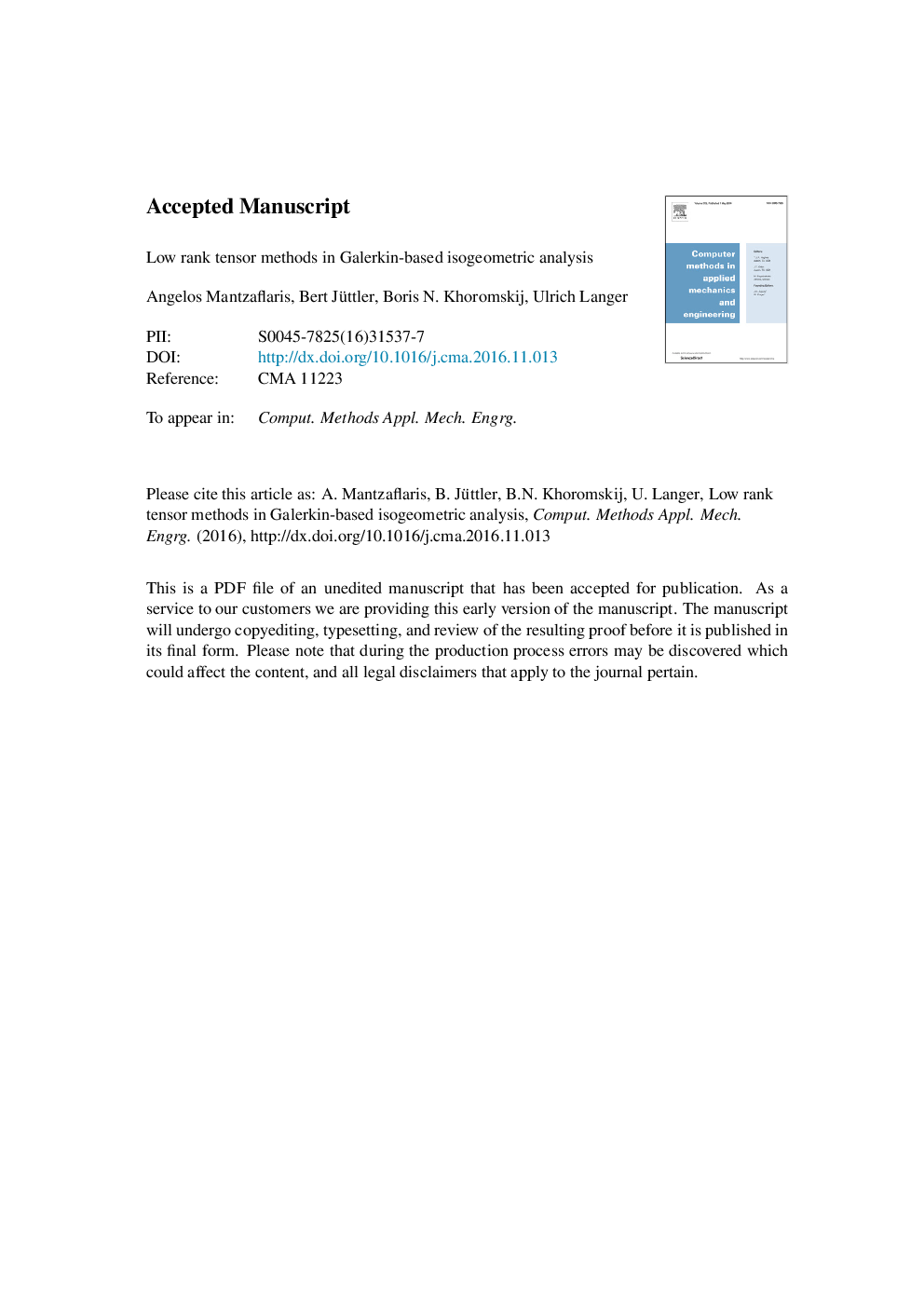| Article ID | Journal | Published Year | Pages | File Type |
|---|---|---|---|---|
| 4964241 | Computer Methods in Applied Mechanics and Engineering | 2017 | 35 Pages |
Abstract
The global (patch-wise) geometry map, which describes the computational domain, is a new feature in isogeometric analysis. This map has a global tensor structure, inherited from the parametric spline geometry representation. The use of this global structure in the discretization of partial differential equations may be regarded as a drawback at first glance, as opposed to the purely local nature of (high-order) classical finite elements. In this work we demonstrate that it is possible to exploit the regularity of this structure and to identify the great potential for the efficient implementation of isogeometric discretizations. First, we formulate tensor-product B-spline bases as well as the corresponding mass and stiffness matrices as tensors in order to reveal their intrinsic structure. Second, we derive an algorithm for the separation of variables in the integrands arising in the discretization. This is possible by means of low rank approximation of the integral kernels. We arrive at a compact, separated representation of the integrals. The separated form implies an expression of Galerkin matrices as Kronecker products of matrix factors with small dimensions. This representation is very appealing, due to the reduction in both memory consumption and computation times. Our benchmarks, performed using the C++ library G+Smo, demonstrate that the use of tensor methods in isogeometric analysis possesses significant advantages.
Keywords
Related Topics
Physical Sciences and Engineering
Computer Science
Computer Science Applications
Authors
Angelos Mantzaflaris, Bert Jüttler, Boris N. Khoromskij, Ulrich Langer,
